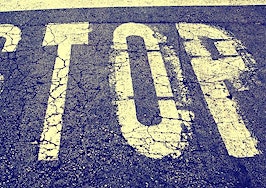- Rising real estate, stock and other assets prices creates wealth inequality as the richer segment of the population owns most of these assets.
- As home prices rise, wealth disparity is created between homeowners and non-homeowners. Homeowners get richer merely by occupying homes while renters don't obtain the same passive benefits.
- When investments are made during a period of artificially low interest rates, they are often malinvestments as the low rates might send false signals to entrepreneurs and homebuyers that the economy is good and investments or purchases should be made.
Adapted with permission; read the original extensive posts at Smaulgld.com.
Fed Chair Janet Yellen is a supporter of negative interest rates
When Janet Yellen was first appointed to the Chair of the Federal Reserve, we noted that Janet Yellen was a supporter of negative interest rates. In “Janet Yellen and negative interest rates” we republished her 2010 comment in support of negative interest rates: “If it were positive to take interest rates into negative territory I would be voting for that”
In “It’s Yellen!” we predicted: “When Ms. Yellen becomes the Fed Chair a more than decade long progression of dysfunctional monetary policy will be complete.
“We will have gone from the low interest rate policies of Alan Greenspan, to the no interest rate policies of Ben Bernanke to the negative interest rates of Janet Yellen.”
Since Ms. Yellen’s appointment she has presided over a Federal Reserve that tapered and ended the third quantitative easing (QE) program started by her predecessor, Ben Bernanke. Since the official end of QE3, Yellen and her Fed cohorts have been threatening to raise/normalize interest rates. To date they have not done so.
Recently, however, some Fed officials have begun talking about negative interest rates.
While the Federal Reserve has been talking about raising rates (but not doing it), negative interest rates have been injected into the Federal Open Market Committee meeting discussions and speeches by Fed officials.
Take my money, please
In the “Dark side of artifically low interest rates,” we noted that central banks setting rates at artificially low levels do not reflect a market price for money. Negative interest rates set by central banks are not only artificial, but surreal. Bank depositors pay for the bank to hold their deposits and borrowers get paid by the bank to take out loans!
For borrowers sounds great, right? Maybe not. Here is the dark side of negative interest rates:
The dark side of negative interest rates
1. Allows theft
Negative interest rates are a form of theft. The longer a depositor holds money in a bank, the less money there will be available for withdrawals.
2. Punishes individual savers
Negative interest rates punish savers young and old.
3. Rewards debtors
Negative interest rates reward borrowers of all sizes. The more one borrows, the more one gains.
4. Encourages non-productive savings
Artifically low rates discourage savings in banks because they pay little interest. Under negative interest rates, however, depositors have to pay the bank. In such circumstances savvy depositors may decide to hoard cash in the banks’ safe deposit boxes and pay the annual fees (some banks have already banned holding cash in safe deposit boxes to prohibit this option) or hoard cash at home.
5. Pushes up housing costs
If interest rates are negative, borrowing to purchase assets is encouraged. Increased demand for assets that rely on financing like real estate will drive up the prices of homes, making homes less affordable.
Those with the best credit scores, the richer portion of society, will benefit most from negative interest rates and buy the most homes. Those with fewer assets and lower credit scores will have limited or no access to negative interest rates, leading to fewer homes being sold to lower- and middle-income people and a further deterioration of the home ownership rate in the United States.
6. Creates asset bubbles
Anyone with extra money, including those that already have their mattresses stuffed beyond capacity with cash, will eventually realize the need to spend it or invest in other assets.
Because the rich can only buy a limited amount of consumer goods, they will buy real estate, art, yachts, fine wine, collectibles, private jets and stocks, which will drive the prices of those assets higher and thereby increase their net worths.
7. Creates further wealth inequality
Rising real estate, stock and other assets prices creates wealth inequality as the richer segment of the population owns most of these assets. Negative interest rates are only a benefit to those that can take advantage of them. The main beneficiaries of negative interest rates will be those who have access to credit — those who already have substantial assets and income.
Negative interest rates exacerbate the wealth inequality situation because if one loses money by saving, and therefore, only spends; one can’t save to accumulate capital to start a business or to invest to buy appreciating assets such as stocks and real estate — and in doing so, get rich. Meanwhile, the already wealthy will benefit from negative interest rates as they can increase their borrowing to buy more assets.
As home prices rise, wealth disparity is created between homeowners and non-homeowners. Homeowners get richer merely by occupying homes while renters don’t obtain the same passive benefits.
Homeowners also gain access to cheap credit not available to renters in the form of negative interest home equity loans and benefit from the mortgage interest deduction. Those not owing stocks or real estate will miss out on the appreciation of stocks and lacking good credit will not participate in the housing market.
As stock and other asset prices rise and are held in increasingly fewer hands further wealth disparity will be created. Thus, a major issue that central planners have been trying to solve with increasing urgency since the publication of Thomas Pickety’s “The economics of inequality” will have been exacerbated by their negative interest rate policy.
8. Inflationary
The Fed and other central planners are enamored with price inflation.
9. Discourages investment in capital equipment, labor and research and development
Corporations reacted to artificially low rates by buying back their own shares (either with existing cash or with dollars borrowed at the artificially low rates) to reduce the inventory of shares available on the market and thereby increase their earnings per share. As earnings per share increased their companies’ stock prices often rose (or declined less steeply than they would have without the share buybacks).
10. Encourages malinvestment by sending false signals
When investments are made during a period of artificially low interest rates, they are often malinvestments as the low rates might send false signals to entrepreneurs and homebuyers that the economy is good and investments or purchases should be made.
In a non-centrally planned economy, savings and investment provide the capital needed to create productive capacity that is self-sustaining. Negative interest rates would further discourage savings as the return on savings is nil.
Therefore, when rates are artificially low or negative, capital gets diverted from productive investments where there might be a long-term return on investment and flows instead toward either speculative ventures or assets (such as real estate) with the potential of large returns or toward the purchase of consumer goods.
The Fed and other central banks, however, have driven interest rates down precisely because the economy is not doing well and to encourage, rather, trick entrepreneurs and consumers to employ capital in places they otherwise might not spend or invest. Negative interest rates, the thinking goes, would further encourage or trick entrepreneurs and consumers to continue their malinvestment binges.
Austrian economists argue that artificially low interest rates fool entrepreneurs into making investments they otherwise would not make. We think, rather, many entrepreneurs understand the artificial nature of the low interest rates but nonetheless take advantage of them, hoping interest rates stay low long enough for their projects and profits to be realized.
Consumers and homebuyers, on the other hand, we believe are fooled by artificially low interest rates as to the underlying health of the economy.
With the onset of negative interest rates, sagacious entrepreneurs (or more aptly, astute Fed watchers) will have projected correctly in anticipating that interest rates would stay long enough for their projects to be completed.
Consumers and homeowners not paying much attention to interest rates or the economy will assume continued increases in home prices are a sign a strengthening economy.
Initial public offerings of non-profitable companies have soared under artificially low interest rates and would be expected to continue to be peddled by venture capitalists on Wall Street under negative interest rates. This video captures the new thinking on how to position a start up company.
Lord Maynard Keynes was a proponent of stimulating the economy to bring forward demand when the economy was in recession. In reaction to criticism that stimulus spending would in the end create problems further down the road, Keynes remarked “in the end we are all dead.”
Negative interest rates are designed to create a longer road, a larger bubble and give artificially boosted economies a longer lifespan.
How does it end?
Intervention begets intervention. Like Michael Jackson’s plastic surgeon, one incision is never enough; he needed to make more and progressively deeper cuts until Jackson’s visage was no longer attractive or recognizable.
There are numerous possible unintended consequences of negative interest rates and possible reactions that central planners may try to make the scheme work that we can save for the comment section below.
All manipulation schemes eventually become overwhelmed by natural market forces. Artificially low and negative interest schemes will be no different. Eventually, the market will demand higher rates for the risk of extending credit to unstable banks and to sovereigns that meet their obligations by printing the difference.
Things might go well for a while as the negative rates spur rising stock and real estate prices. Without high yielding (or any yielding) alternative places to put their money and armed with the false understanding that rising stock and real estate prices mean the economy is doing well, people will continue to pour money into the real estate and stock markets chasing them higher until the bubbles bursts.
As rates eventually rise and turn positive, however, gains on unprofitable speculative ventures will evaporate, share prices of speculative companies with no earnings will crash, companies will go out of business and workers will be laid off.
On the consumer side, spending will slow, the consumer goods will have been used up, the bills will need to be paid on the goods purchased, and there will be little or no savings to pay for them. A slew of bankruptcies will ensue.
Louis Cammarosano is the author of Smaulgld, a blog that provides finance, economics and real estate market analysis, and marketing strategies and tips for real estate professionals.








